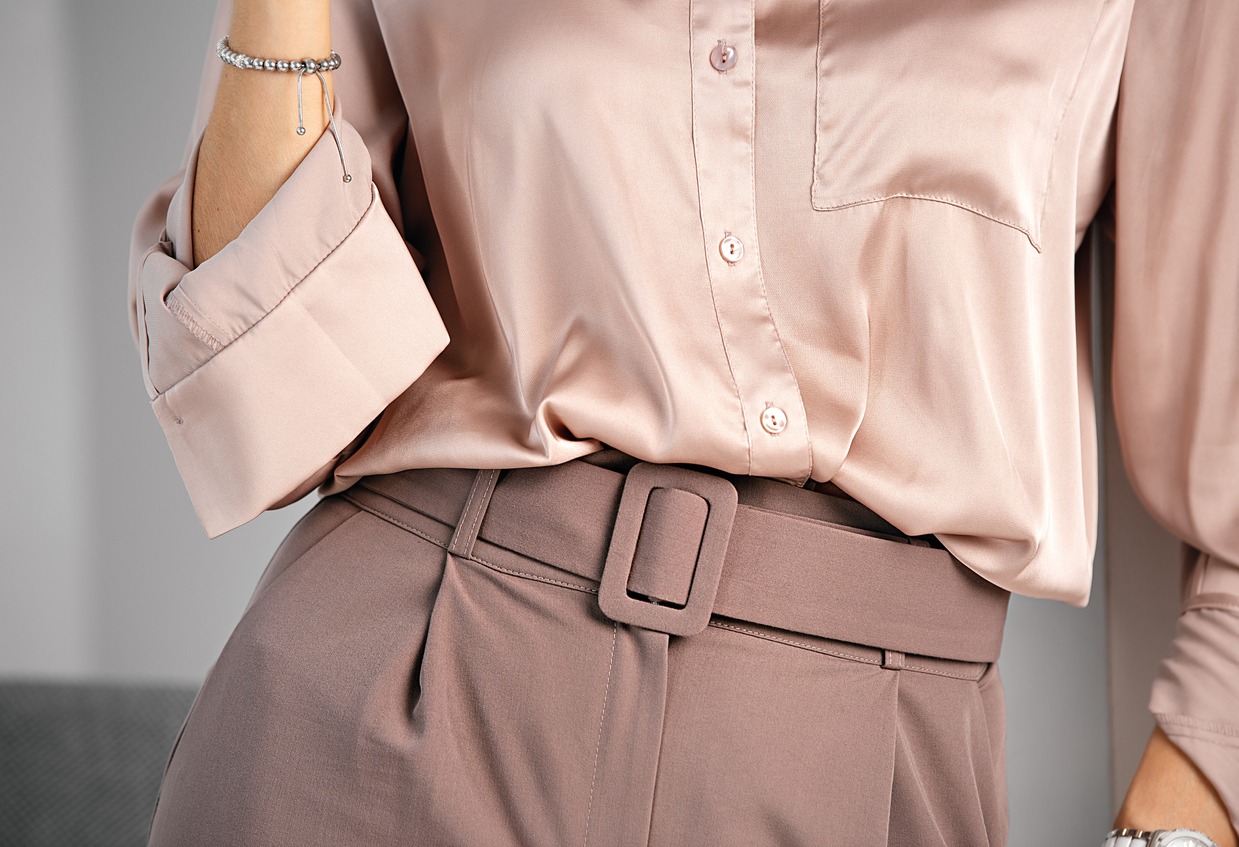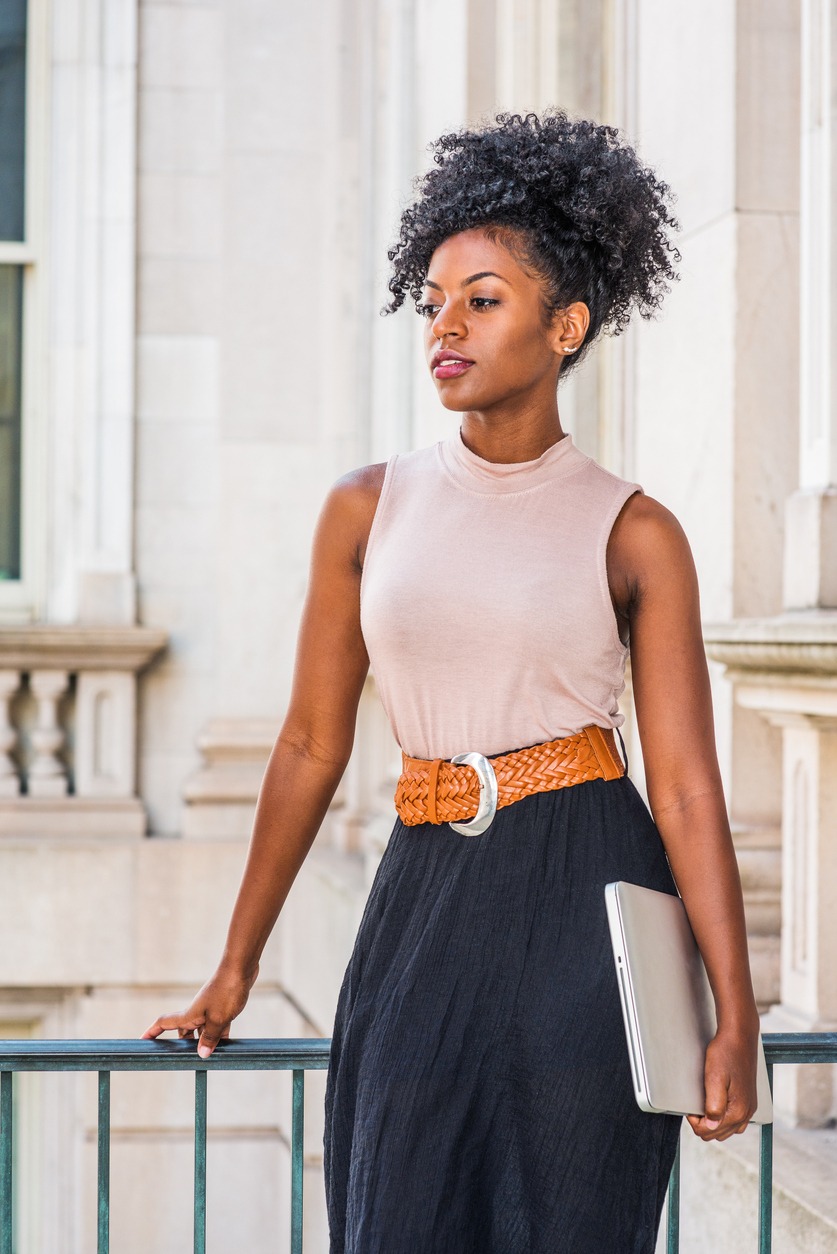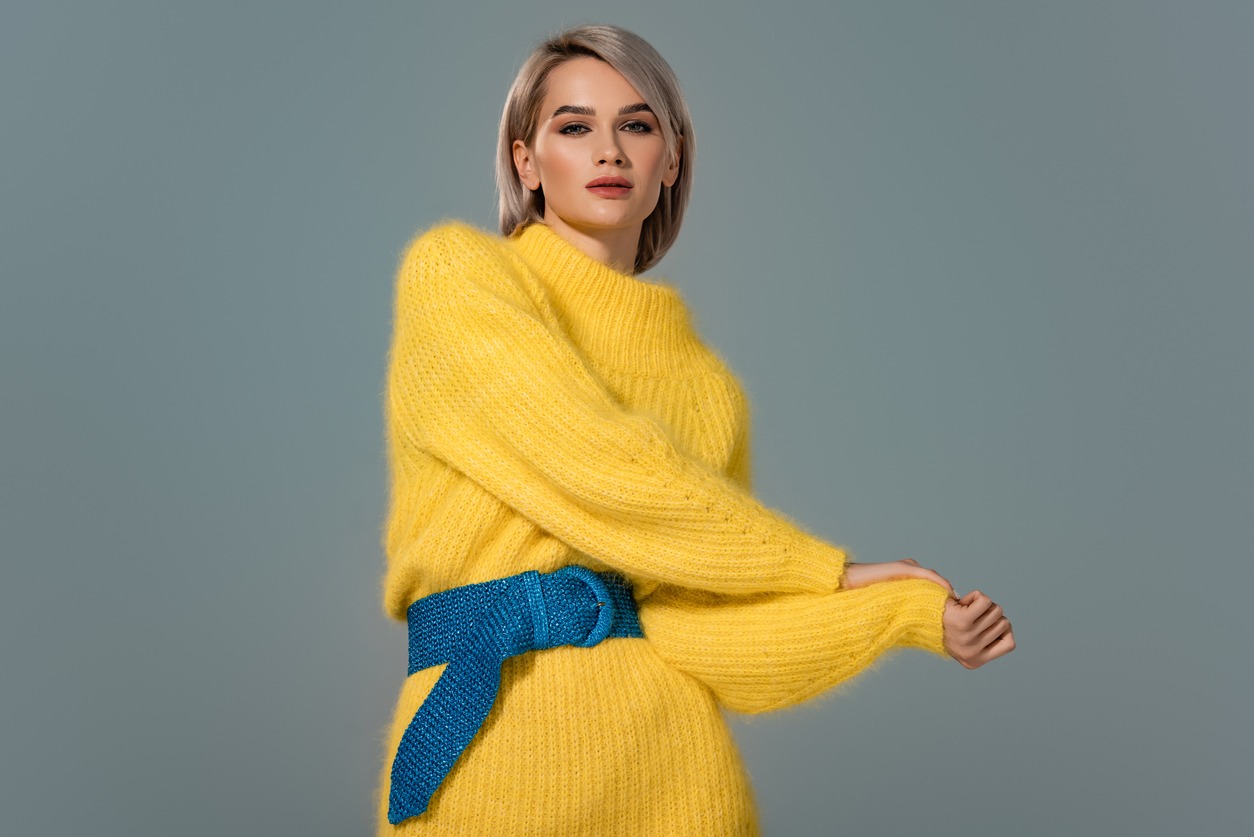A decent belt can make an outfit, but the wrong one may make a sophisticated individual look like a complete disaster. You cannot simply toss a belt on cardigans and evening gowns and expect them to look beautiful. Here are some suggestions for improving your belting game.
When to belt?
1. Tops
Never belt a top. Cardigans, tunics, blouses, T-shirts, and sweaters that you choose to wear untucked do not need to be belted; belting them ages you, and it often looks odd. If you want to accentuate your waist in a certain shirt, tuck it into a skirt and then wear a belt.
2. Jeans and Pants
Do not wear a belt if your pants rest on your hips and do not have belt loops. You will spend the entire day hopelessly attempting to keep it centered on your waistband.
3. Dresses
Belts can and should be utilized to offer a little extra shape and visual interest to dresses, but caution must be used when attempting to manufacture shape where none exists. Using a belt to form a waist requires bunching a great deal of fabric together, which alters the drape of the dress and can make it appear sloppy.
4. High Waisted Skirts
Belts look fantastic with high-waisted skirts. Ensure that the center of the skirt band rests tightly on your natural waist so that the belt does not slip.
5. Coats
If a coat comes with a belt, you should utilize it. Do not attempt to replace it with your own belt. Occasionally, fashion magazines attempt it, but it always appears forced and obvious. You want your attire to feel easy and natural.
How to select a fashionable belt?
A nice women’s belt is an essential asset to any ensemble. It can help draw an ensemble together and give a touch of elegance. However, with so many types and styles of belts available, it can be difficult to choose which one is best for you.
Here are a few guidelines to help you find the best women’s belt for your needs.
- Consider the type of apparel you will be wearing with the belt before purchasing one. A wide, ornamental belt may look fantastic with a flowing dress, but it would be inappropriate for jeans. If you are uncertain about which sort of belt would work best with your clothing, consult a friend or family member.
- Consider the color of the belt next. A black or brown belt will often complement any ensemble, but a brightly colored belt can offer a splash of color. If you’re uncertain about what color belt would look best with your outfit, try on a few different belts in the store to determine which hues complement your complexion and hair.
- Finally, examine the belt’s pricing. You should not spend a great deal of money on a belt you will only wear rarely. If you intend to wear the belt frequently, you should invest in a higher-quality belt that will last longer. Look for belts made of high-quality materials, such as leather or suede, for the best value.
How to wear a belt in the workplace?
Consider your belt an article of jewelry. Do not purchase a belt with a massive, clunky, antiqued gold buckle if you would not wear similar jewelry. It is not required that your belt buckle and jewelry match, but they should complement one another.
Knotting the end of a long belt is a terrific alternative for casual ensembles; however, you must ensure that your belt is long and supple enough to lie flat and not protrude at an unusual angle or scrape into you.
Matching your belt and shoes. There is nothing wrong with matching your belt and shoes, but it is not required. Matching will make you appear polished and well-put-together, but it is a rather conservative style. Mismatching is superior if you’re striving for a more relaxed and playful look.
Obtain the proper length. Ideally, the belt should fit in the center hole. If it were any shorter, it would appear stout. If the tail is any longer, it may not lay flat against your body, and you don’t want it poking out and getting smacked every time you move your arm.
Ensure that your belt complements your style. Do not attempt to make your belt stand out from the rest of your clothing. Identifying your personal style is the first step, followed by ensuring that the belt you wear complements the ensemble as a whole. What I suggest? If you are dressed casually, your belt should reflect this style. For instance, exquisite gold or silver belts go well with formal dress, whereas knitted belts complement casual and athletic attire.
Correct Belt for You
If you have a large waist and long legs
Your goal is to visually lengthen your torso, therefore narrow belts and/or ones that sit below your waist are frequently the ideal option.
You could also:
- Wear a single color above and below the waist, as well as a belt of the same hue.
- Extend the appearance of your torso by wearing a belt in the same hue as your top.
- Wear a single color above and below the waist, together with a thin belt at the waist.
Utilize a hipster belt.
If you are low-waisted with short legs
You have ample torso length to explore with a variety of belt widths, but medium to broad styles work best Avoid wearing belts that are too low, as doing so will accentuate your long torso.
- Wear matching belts and pants to lengthen your legs.
- Wide belts.
- Contrasting buckles.
- Corset belts
If your waistline lacks definition
The objective here is to create the appearance of a waist. This can be accomplished by:
- wearing a belt with a medium-to-narrow width and a darker hue than the garment being worn.
- Wearing a belt in a color complementing your top or dress
- Drawing attention to your waist by exposing your belt through an open jacket or sweater.
- Combining the belt with volume-heavy tops and bottoms to create the illusion of a waist.
If you have a huge bust, choose a bra with a higher cup size.
Often your bust sits lower providing the appearance of being short-waisted with little to no waist definition.
- Medium-to-narrow-width belts in the same or darker color than the garment you are wearing and positioned accordingly.
- Belts that sit on the hips.
- Belts peeping out from under open jackets.
To conclude
The correct belt can do more than just hold pants up—this accessory can bring an outfit together, establish a dress code, and even be a statement piece unto itself.




